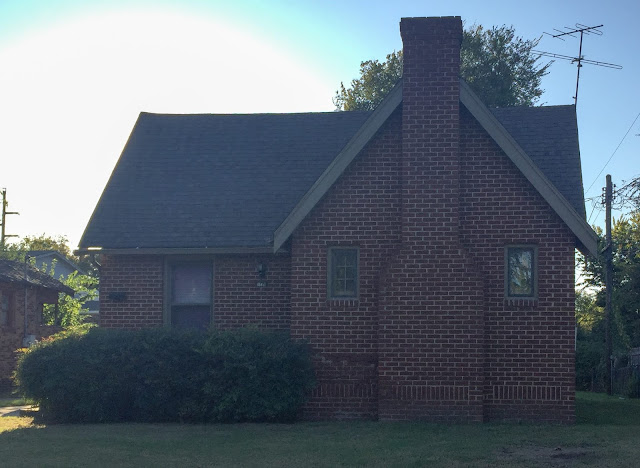A couple named Walt and Virginia Logan lived in the Renaissance Neighborhood at the house pictured above. They were very nice people and well liked by folks in the neighborhood. Walt had a confection business called “Logan Concession Supply” at 326 E. 1st Street downtown. He was known for selling “Walt’s Awful Fresh Goobers,” (popcorn and hot peanuts) at high school ball games and at Skelly Stadium. His wife, Virginia, was a school teacher.
Logan owned a grouping of buildings on 1st Street between Detroit and Elgin Avenues in downtown Tulsa. His primary building held the main office and showroom. Another held the peanut roaster room and storage for some 40,000 pounds of peanuts. A third building was used to manufacture snow cone syrup and make caramel candy at Christmas time. Logan rented the upstairs of one his buildings to Ms. Pauline Lambert.
Her business operated out of the second floor from 1936 through 1979: Tulsa's May Rooms. Pauline was a ‘madame’ who employed a handful of ‘working girls’ who serviced men of all walks of life. From all accounts the May Rooms were Tulsa’s version of The Best Little Whore House in Texas. In the 30’s and 40’s, it is said that coaches brought their winning teams to the May Rooms just as depicted in the move with Dolly Parton and Burt Reynolds.
Miss Pauline Lambert was acquainted with all manner of judges, police officers and important officials. She managed to do business without significant interruption until 1979 when she was 88 years old. In 1979, she was convicted of ‘pandering’ and was facing a sentence of three years in jail and $1,000. Her attorneys were successful at securing her bond and getting continuances for her sentencing.
Nearly four years went by and it became apparent that no one could find Ms. Lambert. After some investigation, it was learned that she had died and had been buried her under her legal name, Clara Palmer, shortly after she was released on bond. Even her own lawyers did not know she had died.
When the story came out, the newspaper published the fact that she rented the space from Walt and Virginia Logan.
Photograph: Beryl Ford Collection/Rotary Club of Tulsa/Tulsa County Library/Tulsa Historical Society. Looking west on 1st Street (one-way) from Elgin in 1953.
References:
Holderman, J. (2019, October 5). Personal interview. Also present were C. Holderman and P. Casey Morgan.
Jackson, D. and Pittman, H. (February 5, 2015). Throwback Tulsa: Madam of longtime Tulsa brothel was unrepentant to the end. Tulsa World. Retrieved from: https://www.tulsaworld.com/blogs/news/throwbacktulsa/throwback-tulsa-madam-of-longtime-tulsa-brothel-was-unrepentant-to/article_f2aa1d98-4c7e-52f1-9e0f-d30d6b0d42ee.html
Lester, T. (July 20, 1997). Strictly Business//May rooms was best run brothel in town. Tulsa World. Retrieved from: https://www.tulsaworld.com/archive/strictly-business-may-rooms-was-best-run-brothel-in-town/article_9bd43d9d-58ae-59a5-a54e-c37e02a54cb3.html
Tillotson, M. (January 31, 2006) Tulsa TV Memories Guestbook 203. Retrieved from: http://tulsatvmemories.com/gb013106.html



Comments
Post a Comment